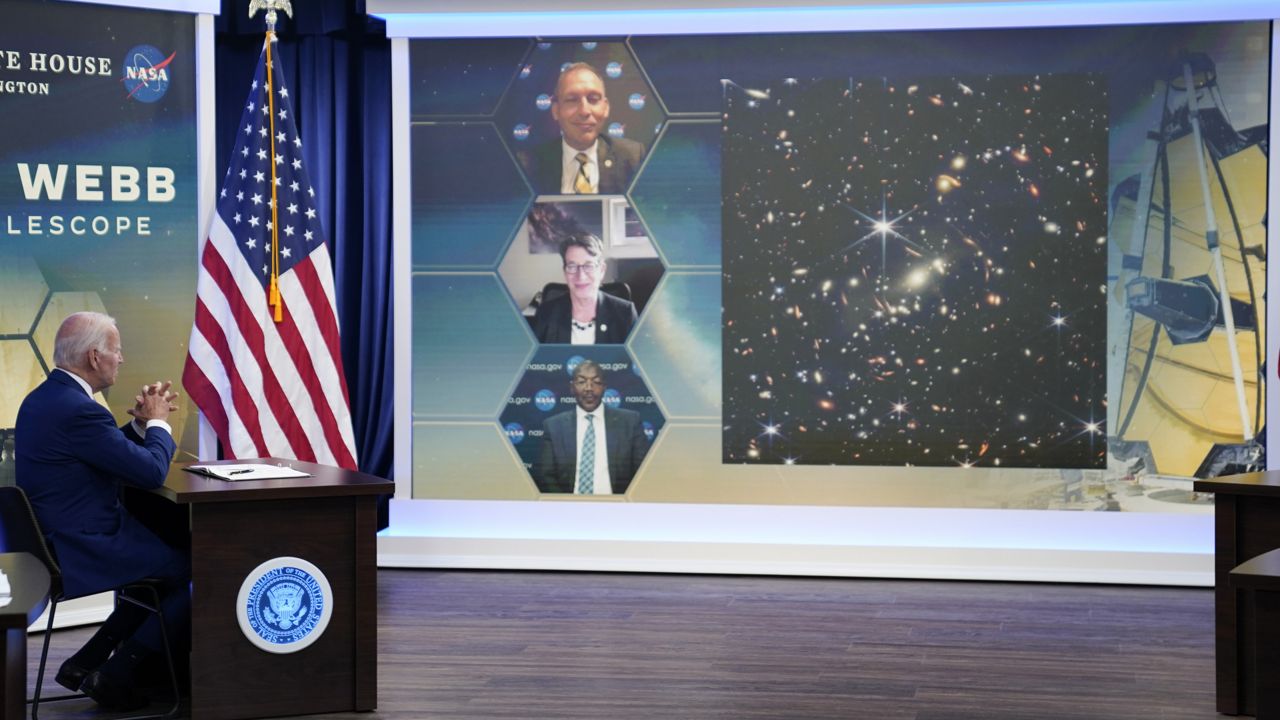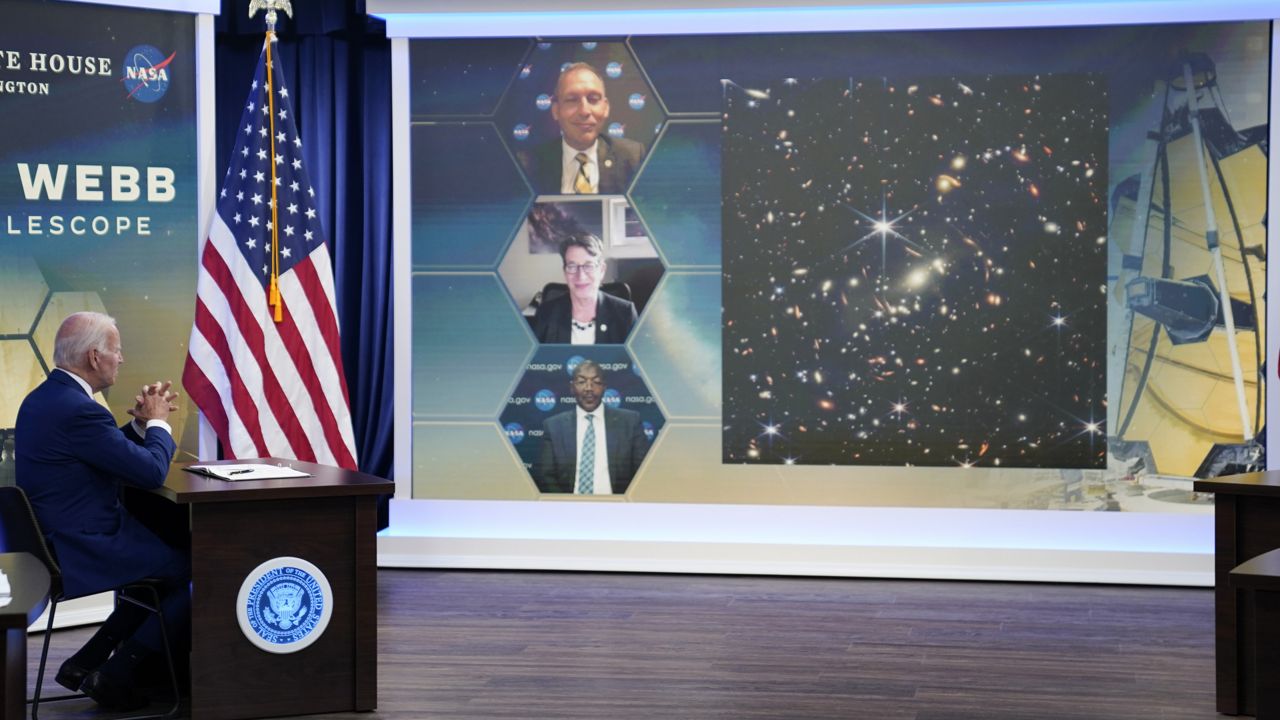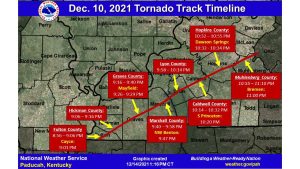On Monday, President Joe Biden debuted our closest look at “the final frontier” when he unveiled one of the first images of deep space captured by NASA’s James Webb Space Telescope at an event at the White House.
The image, dubbed by the space agency as “Webb’s First Deep Field,” offers the deepest and highest-resolution look at our universe ever captured, showing a glimpse at galaxies as they appeared up to 13 billion years ago. The image shows the farthest humanity has ever seen in both time and distance, closer to the dawn of the universe and the edge of the cosmos.
Vice President Kamala Harris, who chairs the National Space Council, said at a press briefing ahead of the unveiling that Monday’s debut represents an “exciting new chapter in the exploration of our universe,” adding that the image “allows us to see deeper into space than ever before, and in stunning clarity.”
“It will enhance what we know about the origin of our universe, our solar system, and possibly life itself,” she added.

President Joe Biden listens during a briefing from NASA officials about the first images from the Webb Space Telescope, the highest-resolution images of the infrared universe ever captured, in the South Court Auditorium on the White House complex, Monday, July 12, 2022, in Washington. (AP Photo/Evan Vucci)
President Biden touched on the awe-inspiring technology that went into the James Webb Telescope – whose sunshield, at the size of a tennis court, is comprised of 250,000 shutters to capture images from deep space.
The telescope offers “a new window into the history of our universe,” Biden said, adding: “Today we’re gonna get a glimpse of the first light to shine through that window. Light from other worlds orbiting stars far beyond her own. It’s astounding to me.”
That shot – unveiled on a screen behind the president and vice president – was filled with lots of stars, with massive galaxies in the foreground distorting the light of the objects behind, telescoping them and making faint and extremely distant galaxies visible. Part of the image contains light from not too long after the Big Bang.
“[If] you held a grain of sand on the tip of your finger at arm’s length, that is the part of the universe that you’re seeing – just one little speck of the universe,” NASA administrator Bill Nelson said after the photo was released, adding that the image goes “back almost to the beginning” of time.
That image will be followed Tuesday by the release of four more galactic beauty shots from the telescope’s initial outward gazes.
Biden and Harris were briefed Monday evening from NASA officials and previewed additional images from the telescope ahead of Tuesday’s release.
“We’re going to give humanity a new view of the cosmos, and it’s a view that we’ve never seen before,” Nelson said before the unveiling, per CBS News.
One of the images, Nelson said, “is the deepest image of our universe that has ever been taken” and scientists are “only beginning to understand what Webb can and will do.”
NASA on Tuesday, along with its partners the European Space Agency and the Canadian Space Agency, will release more images from the telescope on Tuesday.
The agency announced a list of targets of Webb’s first images last week, including:
- Carina Nebula, one of the largest and brightest nebulae, located roughly 7,600 light-years away
- Southern Ring Nebula, a planetary nebula, or cloud of gas surrounding a dying star, located approximately 2,000 light years away from Earth
- Stephan’s Quintet, the first compact galaxy group ever discovered in 1877, located roughly 290 million light-years away
- WASP-96 b, a giant planet located about 1,150 light-years from Earth, which is composed mainly of gas and orbits its star every 3.4 days
The $10 billion telescope, the successor to the Hubble Telescope, launched from South America at the end of last year and traveled 1 million miles from Earth before beginning science operations.
Named for former NASA Administrator James Webb, the telescope will “study every phase in the history of our Universe, ranging from the first luminous glows after the Big Bang, to the formation of solar systems capable of supporting life on planets like Earth, to the evolution of our own Solar System,” per the space agency.




